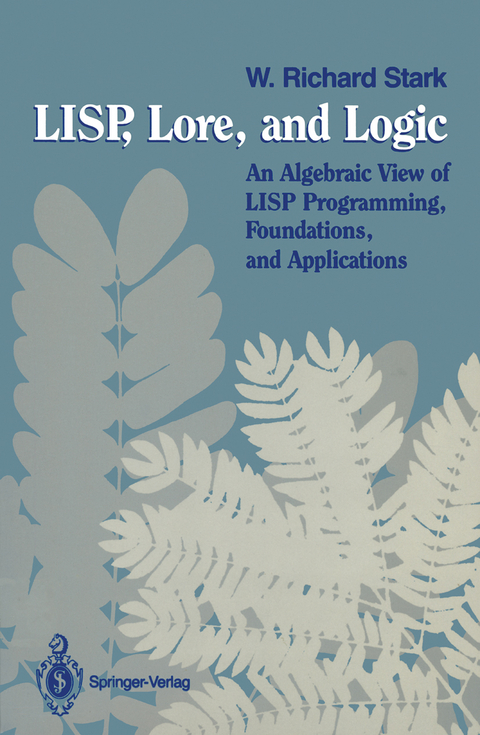
LISP, Lore, and Logic
Springer-Verlag New York Inc.
978-0-387-97072-1 (ISBN)
Here is a presentation of LISP which is both practical and theoretical. For the practical, the syntax of the language, the programming styles, and the semantics of computation are carefully developed. For the theoretical, the algebra of interpreters, the lambda calculus as a foundation for LISP, and the algebraic significance of LISP's approach to artificial intelligence are discussed. As the title suggests, the book reaches beyond the technical side of LISP to present colorful applications, historical comments and quotations, computational philosophy, consequences of LISP's exceptional power, and much more. The material has been designed to appeal to a variety of readers, from the bright freshman to the practicing professional, and from computer scientists and mathematicians to chemists, engineers, and philosophers.
1 A First Look at LISP.- 1.1 The origins of LISP.- 1.2 A glimpse into the structure of LISP.- 1.3 Additional reading.- 2 Elementary Programming.- 2.1 Programming straightforward computations.- 2.2 Recursive and iterative computations.- 2.3 External files.- 2.4 Searching.- 2.5 Extra variables and functions, for efficiency.- 2.6 Other list functions.- 2.7 The fixed-point style of computation.- 3 Deeper into Essential Structure.- 3.1 LISP’S data.- 3.2 Another look at familiar functions.- 3.3 LISP syntax in detail.- 3.4 Self-processing.- 3.5 Bindings, scopes, and environments.- 3.6 Additional reading.- 4 Computational Philosophy.- 4.1 Models of computation.- 4.2 Pure LISP.- 4.3 Types of recursion.- 4.4 The limits of LISP: an unsolvable problem.- 4.5 The folklore of fixed-point computation.- 4.6 Additional Reading.- 5 LISP Functions for Powerful Programming.- 5.1 Debugging tools.- 5.2 Applicative operators.- 5.3 Macros.- 5.4 Structures, vectors, and arrays.- 5.5 Function closures.- 5.6 COERCion.- 5.7 Surgical operations.- 6 Interpreters: from Algebra to LISP.- 6.1 Algebras and interpreting: an abstract view.- 6.2 LISP interpreters.- 6.3 Compiled LISP.- 7 Mathematical Foundations of LISP.- 7.1 The lambda calculus defined.- 7.2 Straightforward computation in the lambda calculus.- 7.3 Fixed-points for object functions.- 7.4 Recursive functions in the lambda calculus.- 7.5 Pure LISP in the lambda calculus.- 7.6 Additional reading.- 8 Automatic Reasoning, Algebraic Intelligence.- 8.1 Logics.- 8.2 Predicate logic and unification.- 8.3 Prolog.- 8.4 Speculation on algebraic intelligence.- 8.5 Additional reading.- 9 Bibliography.- 10 Answers to Selected Exercises.- 11 Index.
| Zusatzinfo | 14 Illustrations, black and white; XVIII, 278 p. 14 illus. |
|---|---|
| Verlagsort | New York, NY |
| Sprache | englisch |
| Maße | 155 x 235 mm |
| Themenwelt | Mathematik / Informatik ► Informatik ► Programmiersprachen / -werkzeuge |
| Informatik ► Theorie / Studium ► Compilerbau | |
| Informatik ► Theorie / Studium ► Künstliche Intelligenz / Robotik | |
| ISBN-10 | 0-387-97072-X / 038797072X |
| ISBN-13 | 978-0-387-97072-1 / 9780387970721 |
| Zustand | Neuware |
| Haben Sie eine Frage zum Produkt? |
aus dem Bereich


